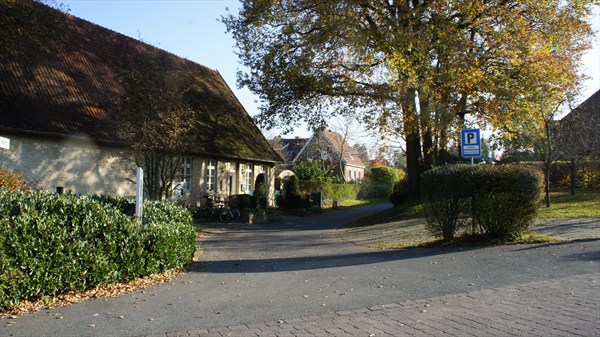Es wäre schön wenn ihr ein Foto von euch oder eurem GPS im Sandsteinpfad macht.(keine Logbedingung)
Alle Fragen können vor Ort mit Hilfe der Infotafeln gelöst werden.
Ihr müsst nicht auf die Logfreigabe warten, ich melde mich, wenn etwas nicht stimmt.
100 million years ago, at the beginning of the upper Cretaceous period, the worldwide sea level rose. What is today Westphalia was flooded from the north.
What was to become Münsterland, including the area around Baumberge, was a deep sea basin. About 100km north-west of this under the sea were high mountain ranges, on which large amounts of mud were deposited. These deposits were moved by earthquakes, forcing them to slide down with great force into the deep-sea areas.
Years later, this area became land, and further geological layers were deposited on top of this one. Under the pressure of these younger layers, the mud layers hardened to stone.
The younger layers were eroded over the following years in the Baumberge area. The former mud layer, which had hardened to chalky sandstone, once again returned to the earth's surface.
Baumberge sandstone was formed in the upper Cretaceous period in this way. It is a very fine-grained, sandy limestone. Baumberge sandstone is very soft and very prone to the effects of the weather.
The Sandstone Path is in the garden of the Sandstone Museum.
Sandstone gathered from across the region of Westphalia can be seen there.
Natural stones from Westphalia have been used to adorn buildings for centuries and still do so to this day - even well past the borders of Westphalia.
 This natural stone has been used as a base material for the most beautiful of sculptures for generations.
This natural stone has been used as a base material for the most beautiful of sculptures for generations.
To this day, famous castles and buildings testify to the use of this natural stone: For example, the Reichstag in Berlin, the royal castle in Amsterdam, the city hall in Middelburg and many other buildings that have used Westphalian sandstone since the Middle Ages.
Precisely where this stone comes from in the region of Westphalia, and where it has been used, and where one can find this material today, can be learned by visiting the Sandstone Museum on the Westphalian Sandstone Path in the museum garden.
There are different types of sandstone there which can be seen and touched.
It is truly amazing how different and full of variety the natural stones from the region can be.
Admission to the Sandstone Museum is free.
Opening times:
Tuesday to Sunday
March to October: 11am to 6pm
November to February: 1pm to 6pm
To gain access to the Earthcache, please answer the following questions via my Profile:
1.) Which phenomenon is responsible for the colour of the sandstone?
2.) Which Sandstone is approximately 75 million years old?
3.) Name the oldest Sandstone, and its age too.
It would be a nice idea to take a photo of yourselves or your GPS on the Sandstone Path (no log-in necessary)
All of these questions can be answered with the help of the on-site Information Board.
You don't have to wait for log-in access – I will contact you if something's not quite right.
Für mehr Informationen / For more informations visit: Sandsteinmuseum